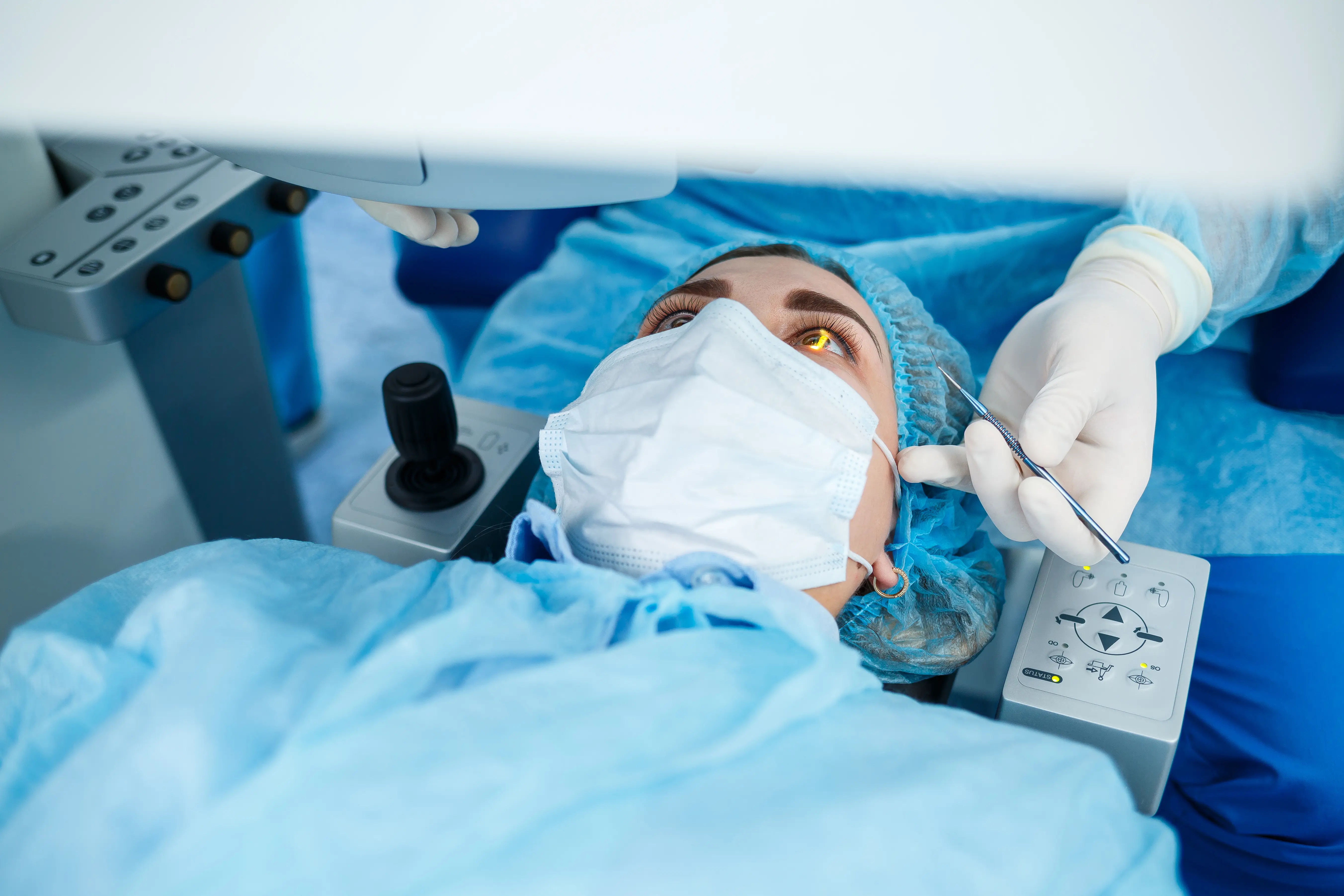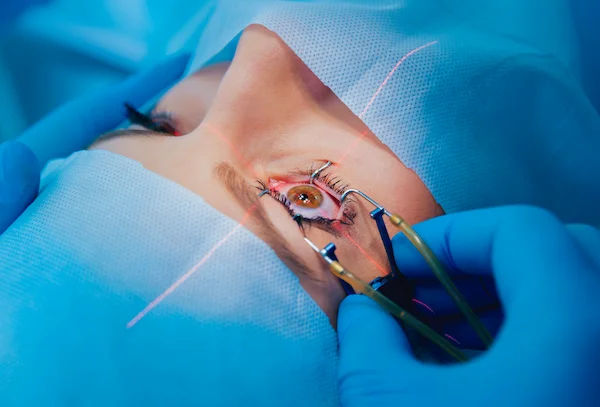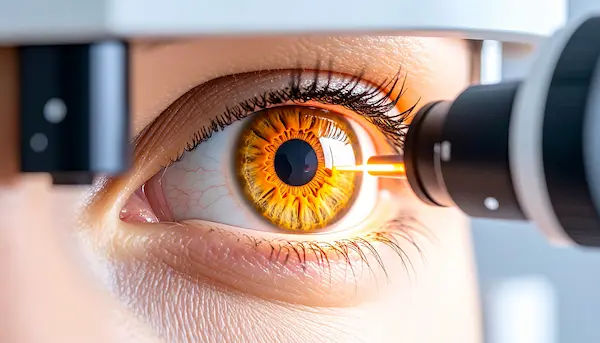Guide to Eye Surgery Debunking Myths
Separate fact from fiction with our guide to common eye surgery myths. Learn the truths, risks, and what to expect before and after surgery.

Written by Dr. Mohammed Kamran
Reviewed by Dr. Rohinipriyanka Pondugula MBBS
Last updated on 25th Sep, 2025

Introduction
The idea of someone operating on your eyes can be daunting. It’s a decision surrounded by a cloud of questions, "what-ifs," and, unfortunately, a great deal of misinformation. If you’ve ever considered laser vision correction or cataract surgery, you’ve likely heard alarming stories or sweeping generalisations that make you hesitate. This article is your clear-eyed guide to the facts. We’re going to tackle the most pervasive myths about eye surgery head-on, separating Hollywood horror stories from clinical reality. Whether you're nearsighted, farsighted, or developing cataracts, understanding the truth is the first step toward making an empowered decision about your vision health. We’ll explore everything from pain and safety to cost and long-term results, giving you the knowledge you need to have a confident conversation with a specialist.
Separating Fact from Fiction: Why These Myths Persist
Misconceptions about eye surgery persist due to misinformation, fear, and outdated beliefs, making it important to know the facts.
The Fear of the Unknown: Our Eyes Are Precious
It’s natural to be protective of our vision. As our primary window to the world, the thought of anything going wrong with our eyes triggers a deep-seated fear. This emotional response is the fertile ground in which myths take root. Stories about botched procedures or permanent damage, even if rare or exaggerated, are more memorable than the millions of successful, life-changing operations performed each year.
How Outdated Information Fuels Modern Apprehension
Eye surgery technology has advanced at a breathtaking pace. What was considered experimental or high-risk two decades ago is now routine and highly refined. However, public perception often lags behind. Information from the early days of procedures like LASIK continues to circulate online and in conversations, creating an outdated picture of the risks and realities of modern refractive surgery.
Consult an Ophthalmologist for the best advice
Myth #1: "All Eye Surgery is Painful and Scary"
This is perhaps the biggest barrier for most people. The truth is, patient comfort is a top priority in modern ophthalmology.
The Reality of Anesthesia and Comfort Measures
You will not be feeling the surgeon’s tools. Eye surgery, particularly laser procedures, begins with the application of anesthetic numbing drops. These drops completely desensitise the surface of your eye. You will be awake, but you will not feel pain during the procedure itself.
What Does Numbing Eye Drop Actually Feel Like?
It feels similar to when you get a drop at the optometrist to dilate your pupils: a slight, momentary coolness or stinging that fades within seconds, leaving your eye feeling numb.
The Procedure Itself: Sensation vs. Pain
During LASIK, for example, you will feel slight pressure when a device called a lid speculum holds your eyelids open and when a corneal flap is created. This is often described as a "pressure sensation" rather than sharp pain. The laser correction itself is painless. The entire process is typically over in under 15 minutes for both eyes. If you experience anxiety, many clinics offer a mild sedative to help you relax.
Myth #2: "Eye Surgery is Extremely Risky and Unsafe"
No medical procedure is 100% risk-free, but modern eye surgery is among the safest elective procedures performed today.
Understanding the Data: Complication Rates in Modern Surgery
According to studies and reviews by ophthalmic societies, the rate of serious complications from LASIK is extremely low, often cited at less than 1%. Technological advancements like wavefront-guided lasers have significantly improved precision and reduced the risk of side effects like night glare. When discussing whether LASIK surgery is safe long-term, the data is overwhelmingly positive, with high rates of patient satisfaction decades after the procedure.
The Critical Role of a Thorough Pre-Operative Screening
Safety starts long before the surgery day. A comprehensive pre-operative evaluation is critical. This extensive screening, which can include corneal thickness mapping, tear film analysis, and pupil measurement, is designed to identify any potential risk factors. If you are not an ideal candidate, for instance, if you have thin corneas or severe dry eye, a reputable surgeon will not proceed and may recommend an alternative like PRK surgery or an implantable collamer lens (ICL). This rigorous screening is the primary reason for the procedure's high safety profile.
Myth #3: "You'll Achieve 20/20 Vision and Never Need Glasses Again"
This myth sets up unrealistic expectations. The goal of vision correction surgery is to dramatically reduce your dependence on glasses and contacts, not necessarily to eliminate them forever in all situations.
Setting Realistic Expectations for Surgical Outcomes
While a vast majority of LASIK patients achieve 20/20 vision or better, individual results vary. The goal is to get you to a functional level of vision for daily activities like driving, working, and watching TV. Some patients may achieve 20/15 vision, while others might have a slight residual prescription but still be thrilled with their results compared to their pre-surgery vision.
How Ageing (Presbyopia) Affects Long-Term Results
It’s crucial to understand that eye surgery corrects refractive errors like nearsightedness, farsightedness, and astigmatism. It does not stop the natural ageing process of the eye. Around age 40, almost everyone develops presbyopia, the hardening of the lens that makes reading small print up-close difficult. This means that even with perfect distance vision after surgery, you will likely need reading glasses as you enter your mid-40s. Surgeons can sometimes create a monovision correction to mitigate this, but it’s not suitable for everyone.
Myth #4: "LASIK is the Only Vision Correction Option"
LASIK is the most well-known procedure, but it's not the only one. Different eyes require different solutions.
A Brief Guide to Alternative Procedures: PRK, ICL, and RLE
PRK (Photorefractive Keratectomy): An excellent alternative to LASIK, especially for patients with thinner corneas. Instead of creating a flap, the surgeon removes the outer layer of the cornea (epithelium), which grows back naturally. The recovery time for PRK surgery is longer and can be more uncomfortable initially, but the long-term results are comparable.
ICL (Implantable Collamer Lens): This involves placing a tiny, biocompatible lens inside the eye, in front of the natural lens. It's ideal for very high prescriptions or thin corneas and is a reversible procedure.
RLE (Refractive Lens Exchange): Similar to cataract surgery, the eye's natural lens is replaced with an artificial intraocular lens. This is often recommended for patients with presbyopia or early cataracts.
Who is a Better Candidate for PRK or Implantable Lenses?
An ophthalmologist will determine the best procedure for you. PRK is often recommended for those in professions with a risk of eye impact (e.g., military, martial arts). ICL is superb for correcting very high degrees of myopia.
Myth #5: "Recovery Takes Months and is Completely Debilitating"
The reality of recovery is far less dramatic for most patients.
The Typical Timeline for Healing and Returning to Normal Life
Most LASIK patients notice a significant improvement in their vision within 24 hours. Many return to work and daily activities the very next day. You will need to avoid rubbing your eyes, swimming, and strenuous activities for a few weeks, but your life is not put on hold. The initial healing is rapid, with vision stabilising over the following weeks to months.
Common, Temporary Side Effects vs. Serious Complications
It’s normal to experience temporary dry eyes after surgery, halos around lights at night, and some light sensitivity. These typically diminish significantly within the first few months as the eyes heal. Your surgeon will provide lubricating drops and follow-up care to manage these effects. Serious, vision-threatening complications are rare, especially with proper pre-operative screening. If you experience significant pain, sudden vision loss, or worsening symptoms after the first few days, it is crucial to consult your surgeon immediately.
Myth #6: "Eye Surgery is Prohibitively Expensive"
While the upfront cost can seem high, it's an investment in long-term quality of life.
Analysing the Long-Term Cost vs. a Lifetime of Glasses and Contacts
Consider the recurring expenses of glasses (new frames, lenses with updated prescriptions), contact lenses, solutions, and regular eye exams over 20-30 years. The cost of ICL surgery vs LASIK or other procedures, when viewed as a one-time payment for decades of improved vision, often makes financial sense. Many clinics offer financing plans to make the procedure more affordable. When you factor in the convenience and freedom from corrective lenses, the value becomes clear.
Conclusion: Empowering Your Decision with Accurate Information
Deciding to undergo eye surgery is a significant personal choice, but it should be made based on facts, not fear. As we've seen, the common myths surrounding pain, risk, and outcomes are largely disconnected from the reality of modern, patient-centric ophthalmology. The key to a successful experience lies in choosing a qualified, experienced surgeon who will conduct a thorough evaluation and have an honest conversation with you about your expectations, the potential benefits, and the minimal risks. Your vision is priceless, and advancing technology has made achieving freedom from glasses and contacts safer and more accessible than ever before. Take the next step by scheduling a consultation with a specialist to see if you are a candidate.
Consult an Ophthalmologist for the best advice
Consult an Ophthalmologist for the best advice

Dr Rajesh Rastogi
Ophthalmologist
33 Years • MBBS, MS Ophthalmology
New Delhi
Rotary Diabetic Centre, New Delhi
Dr. Padmini S
Ophthalmologist
4 Years • MBBS,MS
Bengaluru
Apollo Medical Center, Marathahalli, Bengaluru
Dr. V.chittibabu
Ophthalmologist
30 Years • MBBS, MS
Vellore
Krupa Eye Clinic, Vellore
Dr. Akashdipta Saha
Ophthalmologist
4 Years • MBBS, MD(Ophthalmology), Fellowship in Retina & Vitreous
Delhi
AIIMS, Delhi
Dr. Harshavardhan Reddy
Ophthalmologist
3 Years • MBBS , MS (Ophthalmology)
Hyderabad
Ram Dev Rao Hospital, Hyderabad
Consult an Ophthalmologist for the best advice

Dr Rajesh Rastogi
Ophthalmologist
33 Years • MBBS, MS Ophthalmology
New Delhi
Rotary Diabetic Centre, New Delhi
Dr. Padmini S
Ophthalmologist
4 Years • MBBS,MS
Bengaluru
Apollo Medical Center, Marathahalli, Bengaluru
Dr. V.chittibabu
Ophthalmologist
30 Years • MBBS, MS
Vellore
Krupa Eye Clinic, Vellore
Dr. Akashdipta Saha
Ophthalmologist
4 Years • MBBS, MD(Ophthalmology), Fellowship in Retina & Vitreous
Delhi
AIIMS, Delhi
Dr. Harshavardhan Reddy
Ophthalmologist
3 Years • MBBS , MS (Ophthalmology)
Hyderabad
Ram Dev Rao Hospital, Hyderabad
More articles from Eye Problem
Frequently Asked Questions
1. What is the best age to get laser eye surgery?
The ideal candidate is typically over 18, with a stable eyeglass prescription for at least one year. Most people undergo the procedure in their 20s or 30s, but it can be performed later if you are healthy and have no contraindications like cataracts.
2. Can I have eye surgery if I have astigmatism?
Absolutely. Modern laser systems are specifically designed to correct astigmatism by reshaping the cornea into a more symmetrical sphere. In fact, treating astigmatism is a standard part of most refractive surgery procedures today.
3. Are the results of LASIK permanent?
Yes, the corneal reshaping performed by the laser is permanent. However, your eyes can still change naturally over time due to ageing (presbyopia) or other factors like hormonal changes, which is why some patients may need a minor enhancement years later or reading glasses as they age.
4. What happens if I move my eye during the surgery?
This is a common fear. Modern lasers are equipped with advanced eye-tracking technology. These systems follow microscopic eye movements thousands of times per second, pausing the laser if your eye moves beyond a safe range. This technology makes the procedure incredibly safe and precise.
5. How do I know if I'm a good candidate for vision correction surgery?
Generally, good candidates are in good health, have stable vision, have corneas with sufficient thickness, and do not have uncontrolled autoimmune diseases or severe dry eye. The only way to know for sure is to undergo a comprehensive evaluation with an ophthalmologist.




